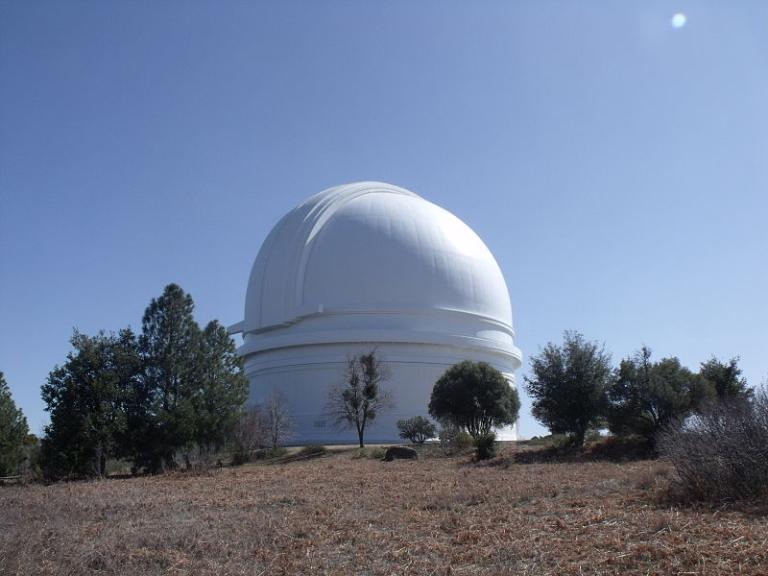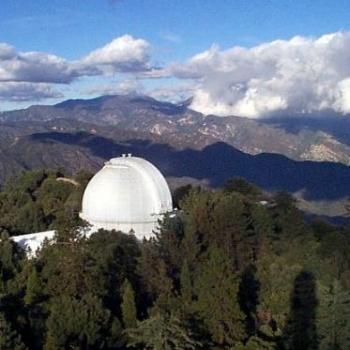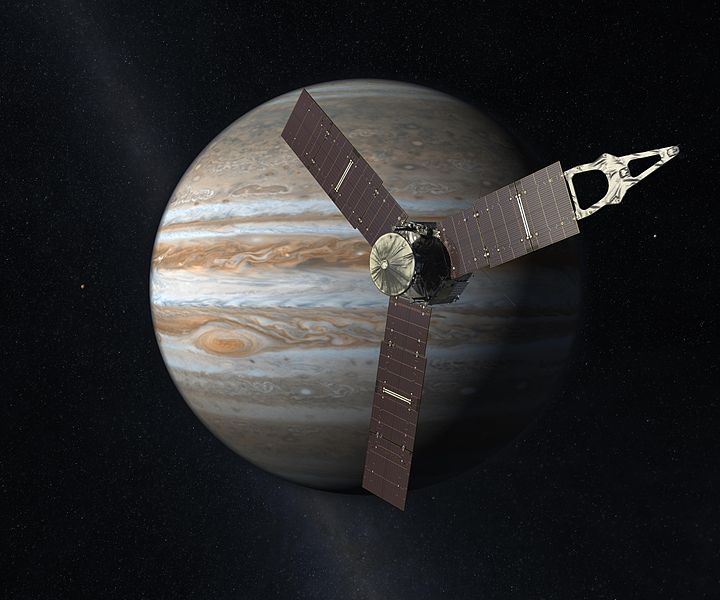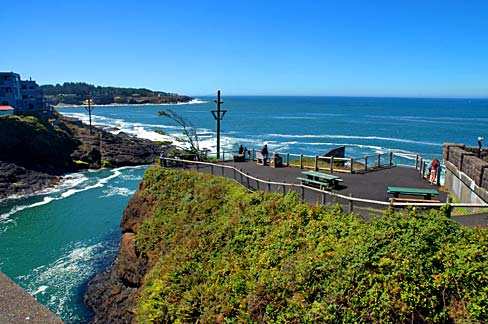
Strictly speaking, of course, this is merely the largest of the observatories in the complex atop Palomar Mountain. The dome encloses the famous 200-inch Hale telescope.
After attending the Vista California Stake conference yesterday, where we listened to (among others) Elder Dieter F. Uchtdorf of the Council of the Twelve Apostles, we continued further inland on Highway 76 to Palomar Mountain, which rises to somewhat more than 6000 feet above sea level.
I haven’t visited the great Mount Palomar observatory since my parents took me there as a child, so this was something I’ve long wanted to do.
Owned and operated by the California Institute of Technology (Caltech), the complex includes a number of telescopes and other instruments, among them the 200-inch (5.1 m) Hale Telescope and the 48-inch (1.2 m) Samuel Oschin Telescope.
George Ellery Hale (1868-1938), himself a pioneering solar astronomer and one of the founders of Caltech, created the largest telescope in the world on four separate occasions: the 40-inch refracting telescope at Yerkes Observatory in Wisconsin, the 60-inch Hale reflecting telescope at Mount Wilson Observatory (which loomed above me as I grew up in San Gabriel, California), the 100-inch Hooker reflecting telescope that is also at Mount Wilson, and, finally, the 200-inch Hale reflecting telescope at Palomar Observatory, which he didn’t live to see completed.
The great American architect and urban designer Daniel Burnham — responsible for, among many other things, the Columbian Exposition in Chicago, New York’s triangular Flatiron Building, and Washington DC’s Union Station — is often quoted as having issued the stirring declaration “Make no little plans; they have no magic to stir men`s blood and probably themselves will not be realized. Make big plans.” The trouble is that, while that saying seems to fit him perfectly and although his son later said that it sounded authentic, there is no clear evidence that he ever spoke or wrote exactly those words.
Atop Mount Palomar, though, I was puzzled to see the saying attributed to George Ellery Hale rather than to Daniel Burnham. And it certainly seems to fit Hale, as well. But the situation is a bit more interesting still: Burnham was based in Chicago, where George Ellery Hale grew up, and he was a close friend of Hale’s father. It was Burnham who convinced young George to apply to the Massachusetts Institute of Technology.
In any case, the 200-inch telescope was the largest such instrument in the world from 1949 until 1975, when the Russian BTA-6 telescope saw what astronomers and observatories like to call “first light.” (Some other sources, using slightly different measurements, say that it was the largest telescope in the world for roughly forty-five years after its construction.)
The Hale Telescope’s own “first light” occurred on 26 January 1949 under the direction of Dr. Edwin Hubble. Since then, among many other things, astronomers using the Hale Telescope — among them such figures, often mentioned here, as Allen Sandage and Sir Fred Hoyle — discovered the distant objects at the very edges of the known universe that are now called quasars, provided the first direct evidence of stars in distant galaxies, and contributed mightily to understanding the synthesis of elements above hydrogen and helium in the periodic table (stellar nucleosynthesis).
Given such achievements, and based also on the striking art deco architecture of the Observatory buildings, the large dome in particular has sometimes been termed the “Cathedral of Astronomy.” (A 1949 newsreel film that can be viewed in the visitor center called it “The Big Eye.”)
At the very beginning of our visit, we listened to an interesting public lecture in the visitor center by Dr. Marianne Heida, a postdoctoral scholar at Caltech in astrophysics — from her very, very slight accent, I would guess that she’s German or, more likely, Dutch — who spoke about using gravitational waves in order to measure the mass and spin of black holes.
We spent considerable time in the visitor center, which is full of fascinating displays and information not only about astronomical discoveries but about the history of the Observatory and the great scientists who have worked there, and then strolled around the grounds. The temperature was brisk. The sun was bright. I still remember gazing in awe, as a child, through the glass of the gallery of the largest dome at the massive Hale Telescope, and I was able to do it again yesterday.
Posted from Oceanside, California












